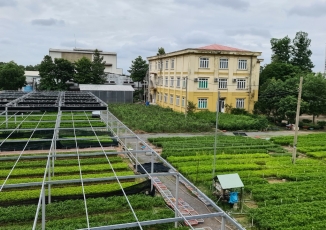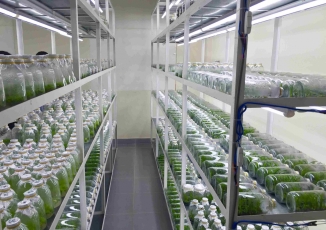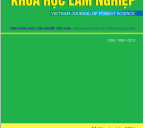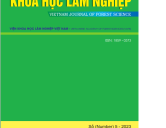Solid wood property variations in early-age Acacia plantation trees grown in southern Vietnam
Solid wood property variations in early-age Acacia plantation trees grown in southern Vietnam
David Blackburn, Vu Dinh Huong, Nguyen Duc Thanh & Daniel Mendham
Abstract
A high demand for woodchips has encouraged smallholder farmers in Vietnam to invest in short-rotation Acacia plantations to produce pulpwood that has a relatively quick, though often low, income return. Because of an expanding export furniture industry, the Vietnam Government has sought to increase sawlog production and, at the same time, improve returns to smallholder farmers. However, currently the quality and therefore market value of the timber from acacias under differing management strategies has not been well quantified. Acacia auriculiformis, both in its pure form and its hybrid with A. mangium (Acacia hybrid) are grown in plantations in Vietnam to produce merchantable timber, though the inferior mechanical properties of juvenile wood at an early age has impeded access to higher-value product markets. However, with thinning, there may be improvements in wood properties that could enhance sawlog values. This study examined how the wood properties of plantation grown Acacia hybrid change with stand age, explored differences in wood properties between Acacia hybrid and A. auriculiformis following different thinning treatments, and determined which of the two species is the most favourable for solid wood products. The potential to supply logs to produce sliced veneer for the furniture industry was also investigated. Logs from A. hybrid trees aged eight years could be processed to manufacture structural products, and at age five years for manufacturing utility furniture. Acacia auriculiformis thinned to 833 stems per hectare at age 4 years had mechanical wood properties indicating a potential for durable flooring products that can command a high value in the market. Because of dead knots, most sliced veneer samples were not acceptable for face veneer, though visual assessments indicated that with pruning, an attractive high-value product could potentially be produced. Tree species rather than age or thinning treatment had the most influence on wood properties.
https://www.tandfonline.com/doi/abs/10.2989/20702620.2020.1813645
- PHẢN ỨNG CỦA MỘT SỐ LOÀI CÂY NGẬP MẶN VỚI YẾU TỐ MÔI TRƯỜNG KHU VỰC VEN BIỂN CẦN GIỜ, TP HỒ CHÍ MINH - 10/04/2024
- Quyết định 426/QĐ-KHLN-KH Ban hành Quy trình kỹ thuật trồng rừng thâm canh Keo lá tràm cung cấp gỗ lớn tại vùng Đông Nam Bộ và Nam Trung Bộ - 15/12/2022
- Quyết định 297/QĐ-TCLN-PTR Về việc công nhận giống cây trồng lâm nghiệp - 15/12/2022
- Improving productivity and sustainability of successive rotations of Acacia auriculiformis plantations in South Vietnam - 14/09/2021
- Growth and physiological responses to intensity and timing of thinning in short rotation tropical Acacia hybrid plantations in South Vietnam - 14/09/2021
VIDEO CLIPS
Liên kết
Ấn phẩm mới
Thống kê truy cập
Đang online: 14
Truy cập ngày: 20904
Tổng truy cập: 283585

















